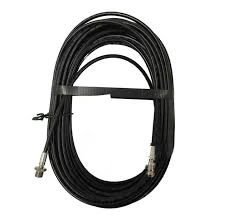Understanding High Pressure Power Steering Hoses
Understanding High-Pressure Power Steering Hoses
Power steering systems in vehicles are essential for providing smooth maneuverability and ease of handling, especially in larger vehicles. At the heart of these systems are power steering hoses, which play a critical role in transferring hydraulic fluid throughout the system. Among these hoses, the high-pressure power steering hose is particularly significant. Understanding its functions, characteristics, and maintenance can help vehicle owners ensure optimal performance.
The power steering system operates by utilizing hydraulic pressure generated by the power steering pump. The high-pressure power steering hose carries hydraulic fluid from the pump to the steering gear or rack. This fluid pressurization assists in reducing the amount of effort required to steer the vehicle, making it easier for drivers to navigate turns and corners. Due to the intense pressure exerted within these hoses—often exceeding 1,500 PSI (pounds per square inch)—they are designed and manufactured to withstand significant stress and wear.
One of the defining features of high-pressure power steering hoses is their construction material. Unlike regular hoses, which may be made from rubber or lower-grade polymers, high-pressure hoses are typically reinforced with layers of steel braiding or other strong materials. This construction allows them to endure the high pressures without bursting or leaking, which could lead to steering failures and dangerous situations on the road.
which power steering hose is high pressure

Identifying the high-pressure hose in your vehicle is essential for proper maintenance. Generally, high-pressure hoses are larger in diameter compared to their low-pressure counterparts and often have a dark, slick exterior due to their specialized coating that provides protection against the harsh conditions found in the engine bay. Moreover, they are usually connected to the power steering pump with rigid fittings to prevent disconnections under pressure.
Regular inspection and maintenance of the high-pressure power steering hose are vital. Look for signs of wear such as cracks, bulges, and abrasions that can develop over time due to exposure to heat, moisture, and other environmental factors. A damaged hose can lead to fluid leaks, resulting in a loss of steering assistance and potentially causing serious mechanical failures. In such cases, it is advisable to replace the hose immediately to avoid further damage.
When it comes to replacing the high-pressure power steering hose, it’s important to use the correct part designed for your specific vehicle model. Power steering hoses are not universal; each vehicle has unique specifications regarding hose length, fittings, and material quality. Consulting your vehicle’s service manual or seeking advice from a professional mechanic can ensure you get the right part.
To sum up, the high-pressure power steering hose is a pivotal component of a vehicle's power steering system. Its ability to efficiently transmit hydraulic fluid under high pressure is essential for maintaining effective steering performance. Regular inspections and timely replacements when necessary will help ensure the safety and functionality of your vehicle's steering system. Understanding the role and maintenance of this component can ultimately lead to a smoother and safer driving experience.
-
Ultimate Spiral Protection for Hoses & CablesNewsJun.26,2025
-
The Ultimate Quick-Connect Solutions for Every NeedNewsJun.26,2025
-
SAE J1401 Brake Hose: Reliable Choice for Safe BrakingNewsJun.26,2025
-
Reliable J2064 A/C Hoses for Real-World Cooling NeedsNewsJun.26,2025
-
Heavy-Duty Sewer Jetting Hoses Built to LastNewsJun.26,2025
-
Fix Power Steering Tube Leaks Fast – Durable & Affordable SolutionNewsJun.26,2025

